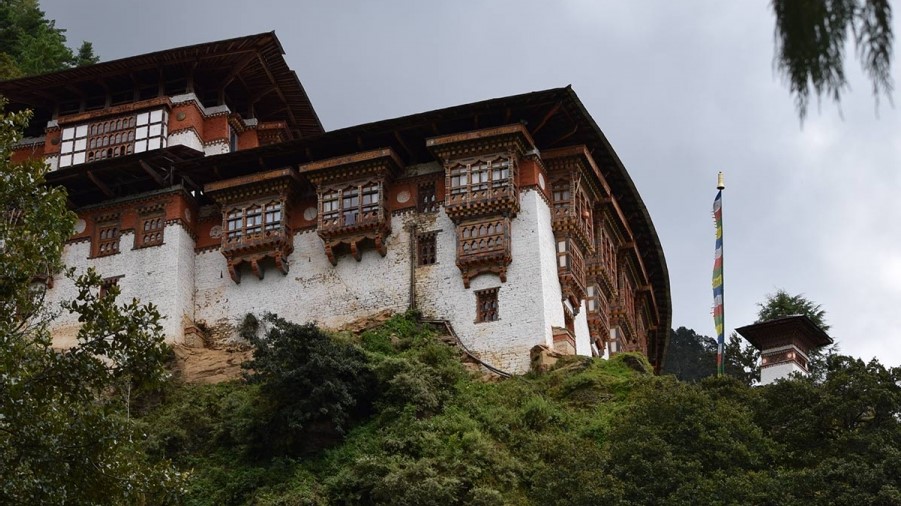Cheri monastery is situated in the upper Thimphu valley. After a half an hour ride, there is an approximately 45 minutes steep walk to reach the monastery.
After the Shabdrung Ngawang Namgyel arrived in Bhutan in the 17th century, he travelled in the Laya, Gasa, Paro, Thimphu, Punakha and Wangdi areas. The grandson of the famous Devine Madman Drukpa Kunley, Tsewang Tenzing (1574-1613) offered him the monastery of Tago with its lands and servants. The Shabdrung was very happy of this gift and he came to stay there. Tago was the place where the first Drukpa to come to Bhutan, Phajo Drugom Shigpo, had meditated and seen the protective deity Tandrin (Skt: Hayagriva) who appeared under the form of a horse from a rock. The Shabdrung stayed in retreat three years at Tago.
The tradition says that because of the magical powers of his enemy, the rule of Tsang in Tibet, or because of the evil spirits, a boulder of the size of a yak fell on the cave where he was meditating, and still now a day, it can be seen. Following this incident the villagers started spreading the rumour that that the Shabdrung was dead but those who had faith in him went to Tango and saw that he was not harmed and that he was sitting more radiant than ever. This event increased the people’s faith in him. They returned to their village and on the top of their roofs, they put a white flag for the gods. From this day it is said that the tradition of putting flags on the roofs was established. Later the Shabdrung’s father Mipham Tenpeyu Nyima died at Ralung Monastery in Tibet. By secret means, the Shabdrung had the body of his father brought from Ralung and after they finish the cremation according to the ritual of Demcho Khorlodompa (Skt: Cakrasamvara), the Shabdrung thought of building a new temple to contain the remains of his father. From the guide of Tango written Phajo Drugom Shigpo in the 13th century, there was a prophecy saying that on the right of Tango there was a place called Mijur Dorjeden, which had the characteristics of a great place and was the symbol of firm life.
The Shabdrung threw the relic representing Avalokisteshara, which had appeared after the cremation from one vertebra of his father, and it fell at the place of Cheri which is next to Tango. Therefore at 29, in 1620, the Shabdrung started to build his first residence. During the day he was building the monastery while during the night he was meditating in the cave called “the cave of the subjugation of the evil spirits”. The monastery was completed on one and half year. From Nepal some craftsmen came and built one chorten in which were put the relics of the Shabdrung’s father and of the eminent monks of the Drukpa Kagyu Lineage. The Shabdrung performed the ceremony of consecration of this huge commemorative chorten in silver, which was called “Nul Bum Chorten”, and he established a new monk body of 30 monks. The first abbot was Pekar Juney (? – 1672) and that was the beginning of the Drukpa monastic community in Bhutan. The Shabdrung also invited from Tibet his preceptor Lhewang logroe who started teaching the monks in Cheri. He was a scholar and an expert in astrology. As a proof of his accomplishment a fire appeared from a hole.
The Shabdrung saw in a vision that he was destined to conquer Bhutan and to express his gratitude, he composed a dance which is still now a days represented during the festivals “Tsechus”: the Dance of the ‘Guitar Cham’.





